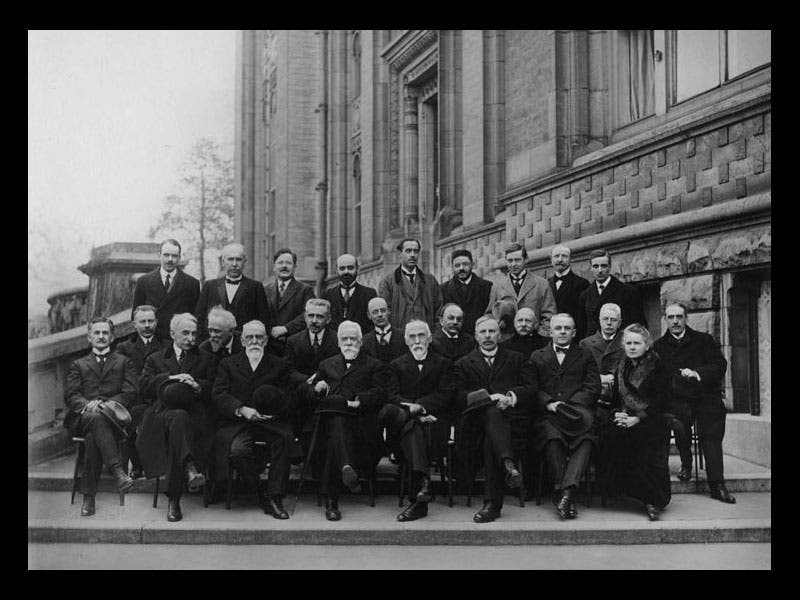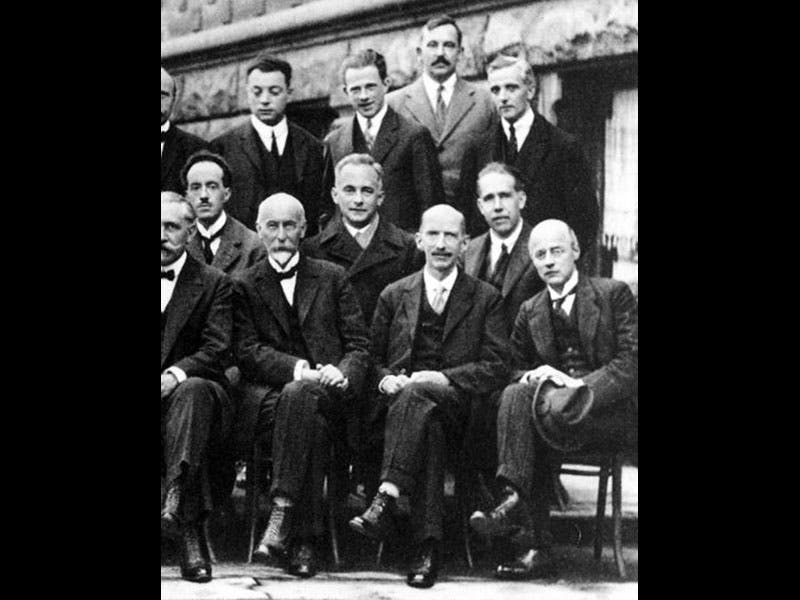Scientist of the Day - Ernest Solvay



Ernest Solvay, a Belgian industrial chemist, died May 26, 1922, at the age of 84. Solvay (sixth image) made a great deal of money by inventing a low-cost procedure for producing soda from sea salt and ammonia, now called the Solvay Process. He had always wanted to be a pure scientist rather than an industrialist, and since circumstances denied him that, he became instead a patron of the sciences. Convinced by a German colleague that physics and chemistry were in a state of crisis due to recent work by Max Planck and Albert Einstein on quantum theory, Solvay agreed to fund a "scientific synod" that would bring together the world's brightest minds to discuss current theories of radiation and quanta. The result was the first Solvay Conference, held in Brussels in the fall of 1911.
The list of invited attendees, in hindsight, is breathtaking: not only Einstein and Planck, but Ernest Rutherford, Marie Curie, Henri Poincaré, Jean Perrin, and a host of other luminaries. Of the 23 participants, 9 had already collected, or would soon be awarded, Nobel prizes. The official photograph (second image) shows the participants; Einstein and Madame Curie can be seen at the right, and one can identify the other synod members by looking at this photograph on Wikipedia, where each figure is identified by a mouse-over box. Solvay, who did not otherwise participate, is shown seated, third from the left. It has been claimed that Solvay did not attend the photo-shoot and that his image was photoshopped in (70 years before there was a PhotoShop). We have not been able to confirm this, but Solvay's head is indeed noticeably larger than those of his surroundees and differently illuminated, plus, he is considerably closer to the table.
Whatever the case, Solvay went on to fund two more Solvay Conferences, in 1913 and 1921 (the War called a temporary halt to the gatherings), and his estate funded nine more, the last in 1961. The group photos of the first 7 Solvay Conferences, through 1933, is a visual Who's Who of the creators of the revolution in quantum and particle physics that swept through the early 20th century. We show above the photos from the 3rd conference (1921; third image) and the 5th (1927, fourth image). In a detail from the 1927 photograph (first image), one can identify not only Planck, Curie, Hendrik Lorentz, and Einstein in the front row, but also, directly behind Einstein, Paul Dirac and Arthur Compton, and one row further back, Erwin Schrödinger. If we peek at the far right (fifth image), we can spot Wolfgang Pauli and Werner Heisenberg in the back row, with Niels Bohr seated in the second row at the far right, right next to Max Born, who sits next to Louis de Broglie. What an assembly of brilliance!
The Solvay Process, which made Solvay’s fortune, is not nearly as well known as the Solvay Conferences, which consumed it. But a philanthropist’s money has rarely been better spent.
Dr. William B. Ashworth, Jr., Consultant for the History of Science, Linda Hall Library and Associate Professor, Department of History, University of Missouri-Kansas City. Comments or corrections are welcome; please direct to ashworthw@umkc.edu.









